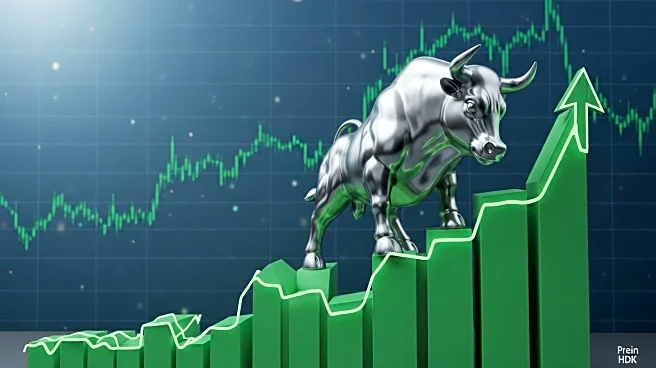What's Happening?
Bitcoin has surged to a new all-time high of over $125,700, as reported by Tradingview. This increase in value is accompanied by a significant reduction in the amount of Bitcoin held on centralized exchanges, which has fallen to a six-year low of 2.83 million BTC, according to Glassnode. The decline in exchange balances suggests that more Bitcoin is being moved into self-custody, institutional funds, or digital asset treasuries, indicating a trend towards long-term holding rather than immediate selling. This shift is further evidenced by the withdrawal of over 114,000 BTC, valued at more than $14 billion, from exchanges in the past two weeks.
Why It's Important?
The reduction in Bitcoin held on exchanges and the concurrent price surge highlight a growing trend of institutional interest and long-term investment strategies in the cryptocurrency market. This movement away from exchanges reduces the available supply that could be liquidated, potentially stabilizing prices and encouraging further investment. The trend suggests a maturation of the cryptocurrency market, with more investors opting for long-term holdings. This could lead to increased market stability and potentially higher valuations as demand continues to outpace the available supply.
What's Next?
As Bitcoin continues to rise, analysts suggest that if it convincingly breaks the $126,500 mark, prices could increase significantly and rapidly. The ongoing reduction in exchange balances may lead to a shortage of Bitcoin available for purchase, potentially driving prices even higher. Market participants and investors will be closely monitoring these developments, as further price increases could attract more institutional investors and solidify Bitcoin's position as a key asset in the financial markets.
Beyond the Headlines
The current dynamics in the Bitcoin market may have broader implications for the cryptocurrency ecosystem. As more investors move towards long-term holdings, the role of centralized exchanges could diminish, leading to a shift in how cryptocurrencies are traded and stored. This could also spur innovation in self-custody solutions and digital asset management, as investors seek secure and efficient ways to manage their holdings.











